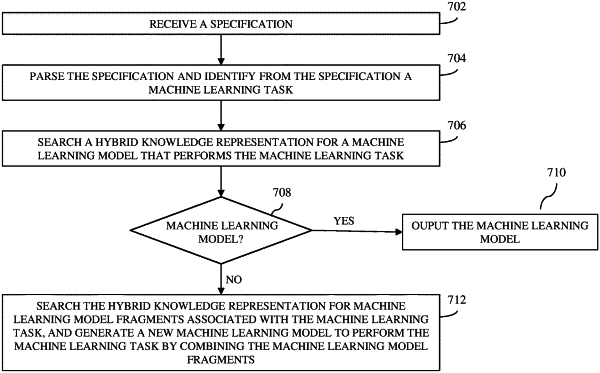| CPC G06N 5/022 (2013.01) [G06F 16/9024 (2019.01); G06F 16/90335 (2019.01); G06N 20/00 (2019.01)] | 20 Claims |

|
1. A computer-implemented method, comprising:
receiving a specification;
parsing the specification and identifying from the specification a machine learning task, wherein the specification includes at least characteristics about dataset, characteristics of model, and metric associated with machine learning for performing the machine learning task;
searching a hybrid knowledge representation stored in a memory device for a machine learning model that performs the machine learning task, the hybrid knowledge representation structured as nodes representing machine learning workflow components and edges connecting the nodes based on relationships between the nodes;
responsive to not finding in the hybrid knowledge representation the machine learning model to perform the machine learning task specified according to the specification including the characteristics about dataset, characteristics of model, and metric, searching the hybrid knowledge representation for machine learning model fragments associated with the machine learning task, the hybrid knowledge representation including at least components of a machine learning pipeline including at least datasets that can be split to provide a training set, validating set and testing set, and generating a new machine learning model to perform the machine learning task by combining the machine learning model fragments.
|